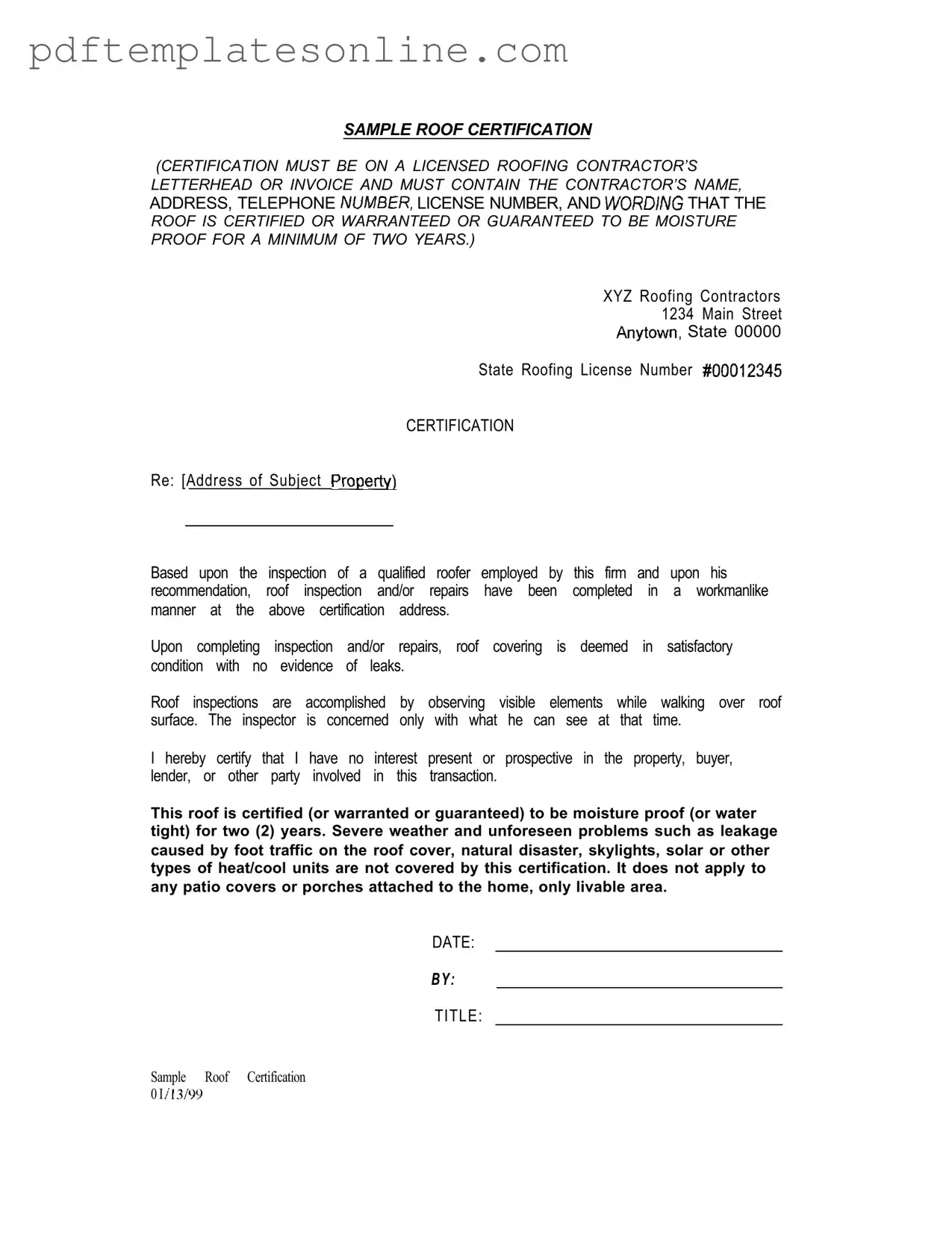Blank Sample Roof Certification Form
The Sample Roof Certification form serves as an official document that verifies the condition of a roof after inspection by a licensed roofing contractor. This certification assures homeowners and potential buyers that the roof is moisture-proof for a minimum of two years, contingent upon the contractor's thorough evaluation. Essential details, such as the contractor's contact information and license number, must be included to validate the certification's authenticity.
Access Sample Roof Certification Editor Now
